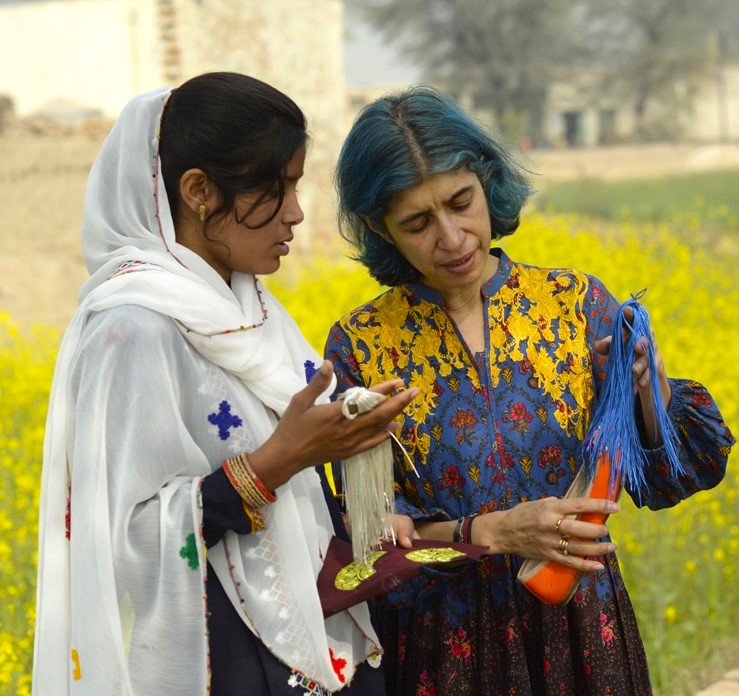
TRADITION AND CULTURE
Having grown up amongst trunks of old textiles and rich traditions, she wanted to bring this world into fashion accessories.
She had moved from Karachi to London to study but kept her love for handcraft. After several years of working in the corporate world, on one of her trips back home, she discovered the women who had kept up the tradition of embroidering shoes for the Moghul Kings and Queens.
The Moghuls were patrons of the Arts and in addition to jewellery making and carpet weaving they loved their footwear. Meher began her collection with these women and started on little jewelled slippers and ballet flats. This craft, which is over 400 years old, is handed down from generation to generation and kept alive through sisterhood, work ethic and love for detail.
Each collection starts in our Atelier in London and Berlin where we work with technical specialists in Europe. These designs are then transformed into embellished shoes and accessories - each shoe is hand crafted by master craftsmen who work with the embellished uppers to create shoes and bags.
SUSTAINABILITY
To achieve our goals of producing quality in a sustainable way, we set up our own workshop in Karachi. Our workshop is an incredibly crea- tive space where craft and fashion meet in a “sustainable” environment.
By using hand craft and working by daylight in the villages we minimise the use of electricity. We started the brand using re-cycled cartons and continue to use embellishments spun from plastic waste.It is not only about the final product but the whole process involves minimising waste, using public transport to move embroideries across villages instead of courier flights and being located centrally where markets and resources are a bike ride away.
Most of our staff has worked with us from inception. Some of them may have had limited education while being very skilled in their own field. However, we are secretly delighted that, by opening their eyes to possibilities, they are putting their children through school and university. “Respect for people”, “appreciation of everyone’s cultures” has meant that different groups of people work harmoniously together.
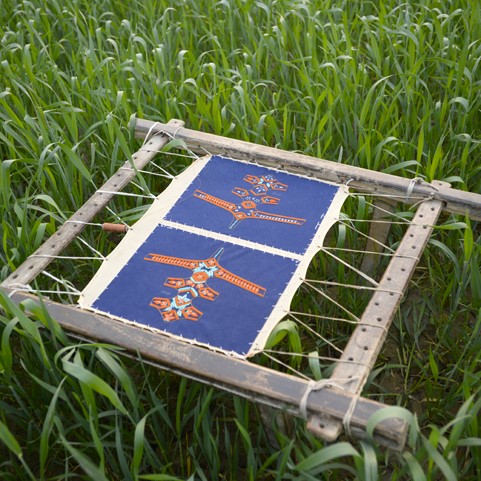
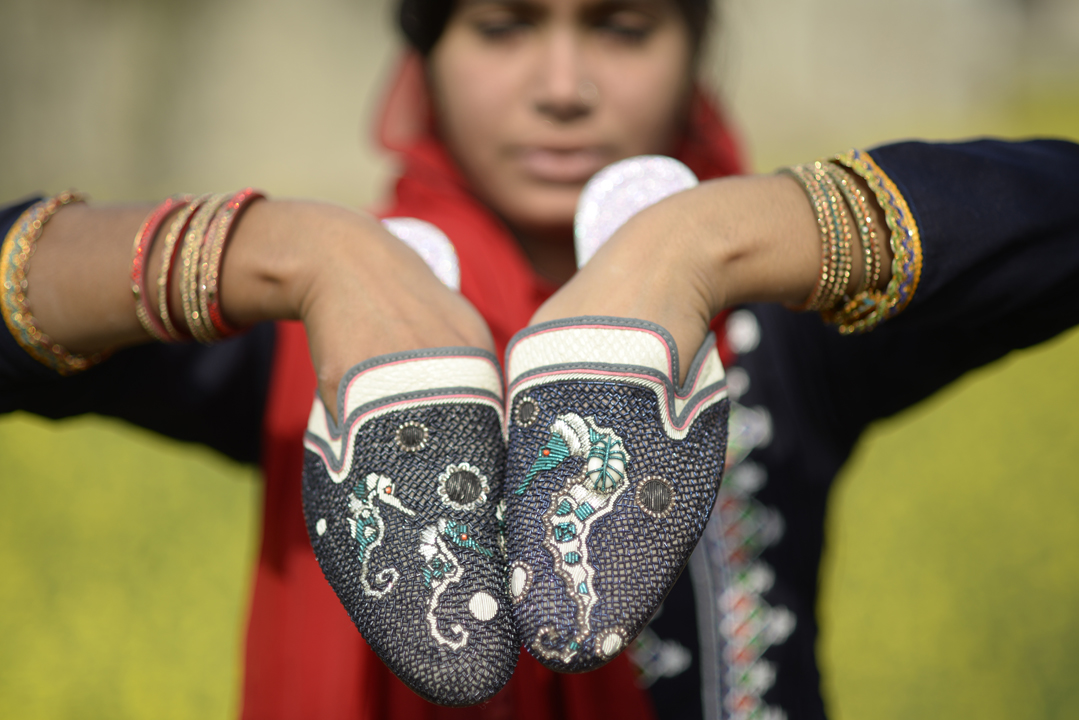
EMPOWERING WOMEN
Meher has been working with women embroiderers clipping and hooking beautiful coils onto different designs for the brand.
These ladies live quietly in their homes in distant villages and yet understand the work ethos we need. Their atten- tion to detail and reliability in terms of deadlines makes it a total joy to work with them. Sometimes it takes a bit of coaxing to get them to agree to new ways of doing things but seeing the result they don’t look back.
Not only do they continue a beautiful craft but also manage to live their lives with an eye on the rest of the world.
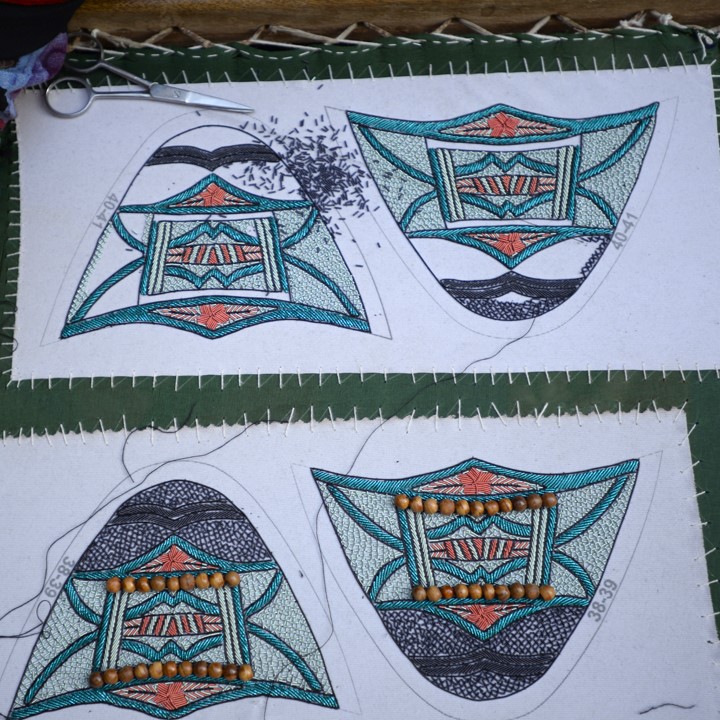
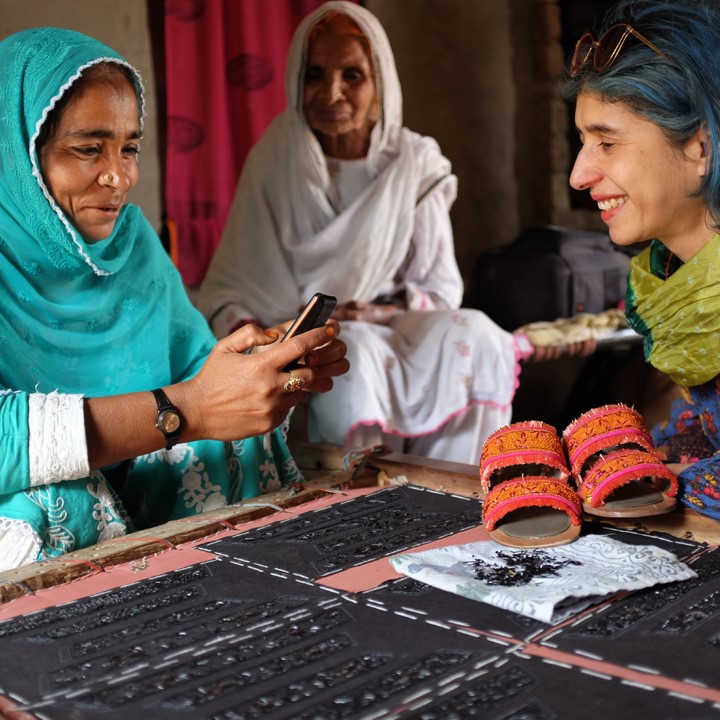
GLOSSARY
Traditional techniques
Aar: a tool similar to a crochet needle to embroider in wool or silk.
Ada: frame on which embroideries are made.
Dapka: fine coils in matt colour are snipped to size before being hooked on to the upper.
Gajai: wire coil placed to create boundaries and outlines which protect the embroidery.
Nakshi: sparkling coils in colour are snipped to size and added as shine and detail in the embroidery.
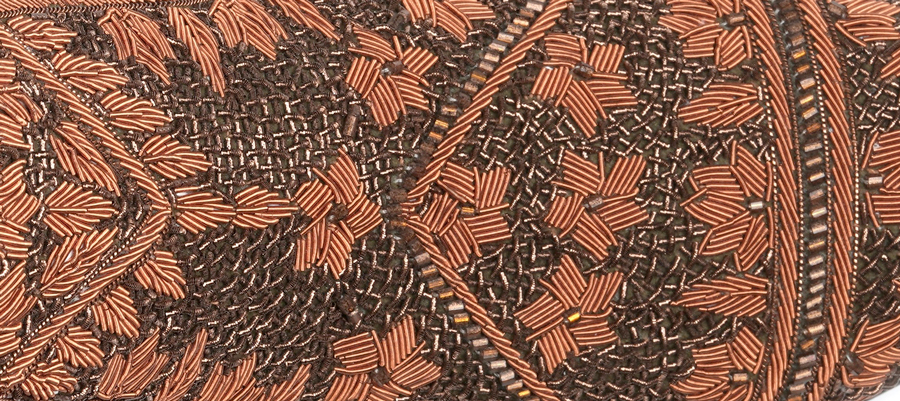

Materials
Cow Skin: vegetable tanned (using natural herbs instead of chemicals to tan the leather) and used largely for soles only. The natural dyeing process takes longer, and our tannery uses traditional hand rolled drums to do this.
Goat Skin: sturdy skins, used only from the food chain and tanned in our own tanneries.
Shearling: sheep skin with hair. This is the original form of the skin so instead of removing the hair it is simply treated to remain and provide warmth and beauty to the wearer.
Sheep Skin: luxurious and silky soft nappa made from Sheep skins. Only purchased when bought from the food chain.
Tanning: the first stage is to create blue crust where the skins are cleaned and treated to last. The crust is then
graded and arranged. Dyeing, where the skins are dipped into dye in drums or sprayed is the next step. The skins are then dried and finished with finishing agents.
Velvet: base for dapka embroidery.
.jpeg)
.jpeg)
Shoe anatomy
Heel: these are either stacked leather or wood.
Instep: the area and height of the foot where you have an arch.
Lining: lining which in our case is usually leather.
Reinforcement: any material or stitching on an upper to help it withstand the stresses met during manufacture, or during wear.
Shank: a reinforcement in the waist of a shoe. This to maintain curvature and support the curved area. It is located between the insole and the sole, usually attached to the insole, and normally made of leather, wood or steel.
Sole: the base of the shoe.
Stiffener: a component that reinforces the upper around the heel area of the foot to support the foot and provide shape retention. It is inserted between the lining and the outer soles to give support and shape.
Tassel: a trim made from several leather strips and held by a loop which is often embroidered in our case.
Upper: the top of the shoe.
Vamp: the component of an upper that covers the front half of the foot. If a shoe has a toe-cap, then the word
vamp may refer to the toe cap and the component behind it.




